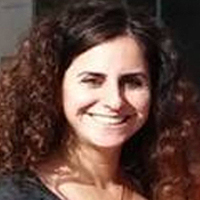Systematic review and meta-analysis of drug induced liver injury secondary to biologic medications in inflammatory bowel disease
Published on: 1st February, 2021
OCLC Number/Unique Identifier: 8979496760
Drug-induced Hepatotoxicity and biologic drugs have historically been challenging in IBD. We aim to study the prevalence of hepatotoxicity in adult patients using biologic medications.
Hypertension and sex related differences in mortality of COVID-19 infection: A systematic review and Meta-analysis
Published on: 21st December, 2020
OCLC Number/Unique Identifier: 8872657013
Background: Hypertension is the leading cause of cardiovascular diseases and premature deaths. Hypertension plays a striking role in mortality and morbidity in case of Coronavirus Disease 2019 (COVID-19) infection; however, numerous studies have reported contradictory findings.
Objective: To assess the relationship of hypertensive disease and mortality of COVID-19 infection and to assess the sex and age differentials on the association.
Methods: We have conducted a systematic review of published literatures that identified the relationship between hypertension and mortality of COVID-19 infections. Nineteen articles were selected following structured inclusion and exclusion criteria for systematic review and analyses. A total of 21,684 hospital admitted COVID-19 patients were included in this review and meta-analysis from 19 studies. The studies covered the six months of the pandemic from December 2019 to May 2020.
Results: In the pooled analysis, the median age of patients was 58 years, and the proportion of male patients was 58.8%. In contrast, we estimated 33.26% of hypertensive and 19.16% of diabetes mellitus patients in the studies. Hypertension was found to be associated with COVID-19 mortality (“Risk ratio (RR) = 1.45, [95% confidence interval (CI): 1.35 - 1.55]; I2 = 77.1%, p - value < 0.001”). The association in the meta-regression was affected by sex (p - value = 0.050). The association was found to be stronger in the studies with males ≥ 55% and age ≥ 55 years (“RR = 1.65, [95% CI: 1.52 - 1.78]; I2 = 77.1%, p - value < 0.001”) compared to male < 55% or age < 55 years (“RR = 1.11, [95% CI: 0.94 - 1.28]; I2 = 72.2%, p - value < 0.001”).
Conclusion: Hypertension was significantly strong associated with COVID-19 mortality which may account for the contradiction in the many studies. The association between hypertension and mortality was affected by sex and there were significantly higher fatalities among older male patients.
Hot cholecystectomy
Published on: 20th November, 2019
OCLC Number/Unique Identifier: 8405164638
Acute cholecystitis is a common general surgery disease which may require hospital admission. Delayed or early cholecystectomy is the definitive treatment. Availability of theatre slots may postpone cholecystectomy for weeks. I am writing this letter to explain the importance of early cholecystectomy programme and the necessity of support such programme by hospital managers. I will rationalize the concept of such program and its clinical and economic benefits.
There are many strong evidences that early laparoscopic cholecystectomy (ELC) is a better option than delayed laparoscopic cholecystectomy (DLC) for management of acute cholecystitis. For example, a meta-analysis study showed ELC as safe and effective as DLC and it is associated with lower hospital costs, fewer work delay lost and greater patient satisfaction [1]. Furthermore, US Medicare database that include 29818 elderly patients with acute cholecystitis found a higher risk for mortality over the following two years in patients who were discharged without surgery compared with patients who underwent cholecystectomy in the initial hospitalization [2].
The risk of hospital re-admission after first attack of acute cholecystitis has been studied in a population –based analysis of the clinical course of 10304 patients with acute cholecystitis who discharged without cholecystectomy. Such analysis showed that the probability of a gall stone –related A&E visit or admission within 6 weeks, 12 weeks and 1 year was 14%, 19% and 29% respectively [3]. This will increase the gall stone disease burden and decrease patients’ satisfaction.
Per NICE guidelines we should offer ELC (to be carried out within 1 week of diagnosis) to patients with acute cholecystitis. Patients who had pancreatitis secondary to gallbladder stones should have laparoscopic cholecystectomy in the index admission [4]. NICE full health economy report showed that ELC burden is 2728.27 in compare to 3686.21 for DLC [5]. Furthermore, 2018/2019 NHS tariff for emergency laparoscopic cholecystectomy is between 6885 to 3872 pounds, while it is 3731 to 2080 pounds only for an elective case.
To sum up, ELC is as safe as DLC with potential lower mortality risk in elderly patients. In addition to eliminate the risk of re–admission after first attack of cholecystitis and decrease health care burden of gall bladder stones disease.
The New (2018) European Hypertension Guidelines an overview & comments
Published on: 24th July, 2019
OCLC Number/Unique Identifier: 8207879134
The European Society of Cardiology (ESC) and the European Society of Hypertension (ESH) jointly developed a series of hypertension guidelines in the years 2003, 207 and 2013. The most recent guidelines were issued by the two societies in August this year (2018) and were published in the European Heart Journal. The new guidelines are printed in more than 90 pages and cover almost all aspects of hypertension based on extensive review of literature giving highest priority to data from randomized controlled trials and well conducted meta-analysis. In important areas where there is inadequate or no evidence, guidelines authors resort to expert opinion. The text was developed over approximately 24 months and was reviewed by representatives of ESC and ESH national hypertension societies. Although it is less than five years since the last hypertension European guidelines in 2013, the recent 2018 guidelines show important differences in diagnosis and treatment strategies with the addition of new sections and recommendations on management of hypertensive emergencies, hypertension in women and pregnancy, different ethnic groups, chronic obstructive pulmonary disease, cancer therapies, peri-operative management, sexual dysfunction and perioperative management.
Risk Factors Associated to Patients with Type 2 Diabetes in Lahore District
Published on: 21st May, 2020
OCLC Number/Unique Identifier: 8605996006
Our research aimed to check the impact of some significant risk variables on diabetes growth and the specific goal of this study was to evaluate the connection of industrial fields with diabetes risk variables. The current research also informs us about the most important risk factor for male and female people with diabetes. A cross-section and convenient sample of 100 people, male and female, without discernment of risk factors and diabetes mellitus (Meta-Analysis on the effect of major risk factors on the diabetic patients form Jinnah Hospital Lahore). The risk factors in the general assessment i.e. lack of exercise, kidney problems, high ranges of tests and residence in industrial areas are found to be significant. Assessment of these factors is helpful in early diagnosis and in prognosis of diabetes.
A comparative study of solid waste management in the United States, Europe and Asia
Published on: 17th April, 2020
OCLC Number/Unique Identifier: 8595208195
Managing municipal solid waste correctly is critical to the success of a society. Many regions and countries in the world are behind others in the context of solid waste management. In order to compare three such regions within this context, a meta-analysis was conducted in order to develop a decision matrix. Within this decision matrix, the United States, Europe, and Asia were compared to determine which region is managing municipal solid waste the best. This research design allowed for compiling information from many sources to increase the accuracy of data used in the justifications for the decision matrix. Purposive sampling was used to select and evaluate sources that discuss solid waste management to discern which region’s processes are most favorable in many parameters. The decision matrix consists of nine parameters: main management techniques; finances; landfill taxes; jobs created; waste generation; waste composition; waste storage, collection, and transportation; energy recovery; and environmental health. Each was scored on a scale from zero to ten, ten being the best score and zero being the worst. The final score from the decision matrix suggested that Europe had the most favorable municipal solid waste management (MSWM) system, and the United States had a notably close yet lower score. Asia had the lowest score that was hardly comparable to the other two regions.
Short term effectiveness of extra corporeal shock wave therapy for plantar fasciitis: A systematic review and meta-analysis
Published on: 30th July, 2020
OCLC Number/Unique Identifier: 8644439951
Background: The argument on whether extracorporeal shock-wave therapy (ESWT) is beneficial in short- term intervention in adults with plantar fasciitis. It is important and necessary to conduct a meta-analysis to make a comparatively more reliable and overall assessment of the outcomes of ESWT in the less than 6 months.
Methods: We conducted a systematic review and meta-analysis of randomized control trials from MEDLINE, EMBASE and CINAHL databases from 2000 to 2020. Randomized trials that evaluated extracorporeal shock wave therapy used to treat plantar heel pain were included. Trials comparing an extra corporeal shock wave therapy with control/placebo were considered for inclusion in the review. We independently applied the inclusion and exclusion criteria to each identified randomized controlled trial, extracted data and assessed the methodological quality of each trial.
Results: Four studies involving 645 patients were included. 3 RCTs (n = 605) permitted a pooled estimate of effectiveness based on overall success rate and composite score of visual analogue scales for pain at follow-up 1 (12 weeks). The pooled data showed no significant heterogeneity at the three-month follow-up (p - value of chi-square = 0.61, p = 0.74 and I2 = 0%). The shock wave group had a better success rate than the control group at the three-month follow-up (OR = 2.26, 95% CI = 1.62-3.15, p - < 0.00001). For reduction of pain the pooled data showed no significant heterogeneity (p - value of chi-Square 0.28 and I2 22%). There were significant differences between the ESWT and control groups for all follow-up visits (random-effect model, three trials, MD = 15.14, 95% CI = 13.86 to 16.42, < 0.00001 at three-month).
Conclusion: A meta-analysis of data from three randomized-controlled trials that included a total of 605 patients was statistically significant in favor of extracorporeal shock wave therapy at follow-up 1(12 weeks).
Severe aorto-iliac occlusive disease: Options beyond standard aorto-bifemoral bypass
Published on: 27th December, 2018
OCLC Number/Unique Identifier: 7964753024
According to recent guidelines, endovascular angioplasty is the standard treatment for TASC A and B primary aorto-iliac occlusive (AIOD) disease, and the first-line approach for TASC C lesions [1,2]. Extended TASC D occlusive disease is usually treated by open surgery yielding excellent patency rates at a cost of a higher mortality (2%-4%) and a severe morbidity (up to 10%) [3]. However, several studies have reported promising results after endovascular treatment of extensive AIOD and full reconstruction of the aortic bifurcation [4,5]. In a recent meta-analysis, Jongkind et al., concluded that endovascular treatment of extensive AIOD can be performed successfully by experienced interventionists in selected patients [6]. Although primary patency rates seem to be lower than those reported for surgical revascularization, reinterventions can often be performed percutaneously yielding a secondary patency comparable to surgical repair.




